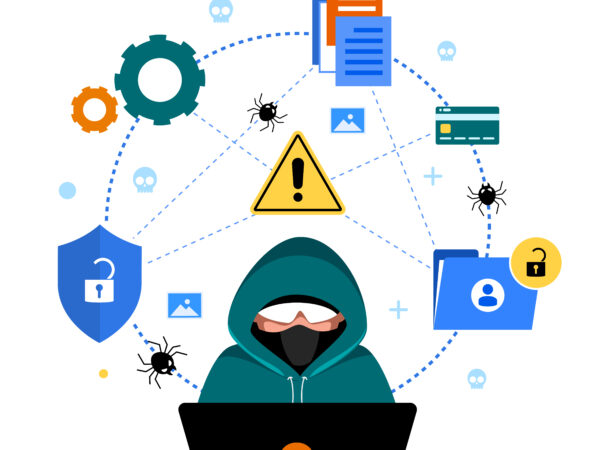
In today’s digital landscape, websites are vulnerable to various types of cyber attacks, including Denial of Service (DoS) and Distributed Denial of Service (DDoS) attacks. These attacks can cause significant damage to your online presence, leading to financial losses, reputational damage, and compromised customer trust. In this comprehensive guide, we will explore the world of DoS and DDoS attacks, their types, and most importantly, provide you with practical strategies to protect your website from these malicious attacks.
Understanding Denial of Service (DoS) and Distributed Denial of Service (DDoS) Attacks
A Denial of Service (DoS) attack occurs when a single device or system is used to flood a targeted website or network with an overwhelming amount of traffic, rendering it inaccessible to legitimate users. On the other hand, a Distributed Denial of Service (DDoS) attack involves multiple devices or systems, often spread across different geographical locations, working together to flood the targeted website or network with traffic.
Types of DoS and DDoS Attacks
There are several types of DoS and DDoS attacks, including:
1. UDP Flood: A UDP flood attack involves sending a large number of UDP packets to a targeted website or network, overwhelming its resources and causing it to become unresponsive.
2. SYN Flood: A SYN flood attack involves sending a large number of TCP SYN packets to a targeted website or network, consuming its resources and preventing legitimate users from accessing the site.
3. HTTP Flood: An HTTP flood attack involves sending a large number of HTTP requests to a targeted website, overwhelming its resources and causing it to become slow or unresponsive.
4. ICMP Flood: An ICMP flood attack involves sending a large number of ICMP packets to a targeted website or network, overwhelming its resources and causing it to become unresponsive.
5. DNS Amplification: A DNS amplification attack involves exploiting DNS servers to amplify traffic directed at a targeted website or network, overwhelming its resources and causing it to become unresponsive.
Consequences of DoS and DDoS Attacks
DoS and DDoS attacks can have severe consequences for your website and business, including:
1. Downtime: DoS and DDoS attacks can cause your website to become unavailable, resulting in lost sales, revenue, and customer trust.
2. Financial Losses: DoS and DDoS attacks can lead to significant financial losses, particularly if your business relies heavily on online transactions.
3. Reputational Damage: DoS and DDoS attacks can damage your reputation and erode customer trust, potentially leading to long-term consequences for your business.
4. Compromised Security: DoS and DDoS attacks can be used as a smokescreen for other types of cyber attacks, potentially compromising the security of your website and customer data.
Strategies to Protect Your Website from DoS and DDoS Attacks
Protecting your website from DoS and DDoS attacks requires a multi-faceted approach that involves implementing various security measures and strategies. Here are some effective ways to protect your website:
1. Monitor traffic patterns: Regularly monitor your website traffic to detect anomalies and potential attacks.
2. Implement traffic filtering: Filter out traffic from known malicious IP addresses, suspicious networks, or traffic patterns.
3. Use rate limiting: Limit the number of requests from a single IP address or network to prevent overwhelming your website.
4. Leverage cloud-based protection: Utilize cloud-based DDoS protection services that can scale to absorb large amounts of traffic.
5. Diversify your infrastructure: Use multiple data centers, servers, and networks to reduce the risk of a single point of failure.
6. Keep software up-to-date: Regularly update your software, operating systems, and applications to patch vulnerabilities.
7. Conduct regular security audits: Perform regular security audits to identify vulnerabilities and weaknesses.
8. Develop an incident response plan: Establish a plan to respond quickly and effectively to DoS and DDoS attacks.
9. Collaborate with your ISP: Work with your Internet Service Provider (ISP) to identify and mitigate attacks.
10. Stay informed: Stay up-to-date with the latest threats, vulnerabilities, and mitigation strategies.
Tools and Services for Protecting Against DoS and DDoS Attacks
1. Cloudflare: A cloud-based security platform that offers DDoS protection, WAF, and CDN services.
2. Akamai: A cloud-based security platform that offers DDoS protection, WAF, and CDN services.
3. Imperva: A cloud-based security platform that offers DDoS protection, WAF, and CDN services.
4. Arbor Networks: A network security company that offers DDoS protection and mitigation solutions.
5. Radware: A network security company that offers DDoS protection and mitigation solutions.
Conclusion
Protecting your website from DoS and DDoS attacks requires a proactive and multi-faceted approach. By implementing security measures, monitoring traffic patterns, and leveraging cloud-based protection services, you can reduce the



